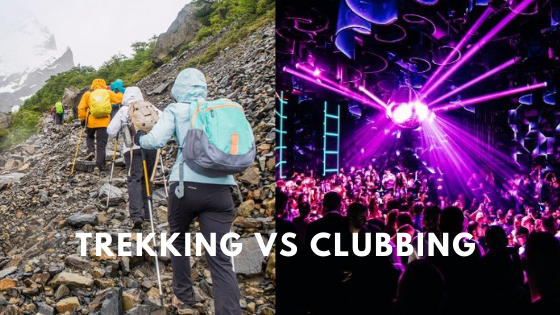In the past two decades, the culture of clubbing has experienced an unprecedented boost. However, more and more youngsters these days are switching towards substituting clubbing with trekking. Gone are the days, when youngsters were blindly attracted to the clubs, today they prefer spending their time trekking instead. There are a plethora of reasons behind this. Here we are going to answer, why is it important for our generation to trek rather than clubbing?
Health benefits
Going to club surely does no benefit to the body other than keeping you in shape after you dance the entire night. Contrarily, going on a trek offers you umpteen health benefits. From keeping your body in shape to improving your stamina, it has a lot to offer to you. Trekking exposes you to the hardships that nature might put you through and on the same note also teaches your body to develop the defense mechanism against the same.
First-hand experience
While in a club, a person gets to socialize but on a trek, a person gets an opportunity to come close to nature and get the first hand experienced exploring the corners of the earth that are still untouched. Unlike listening to the recorded music in the clubs, one gets to listen to the voice of the slow-moving winds and chirping of the birds on a trek.
Pure recreational activity
While on a trek, there is no loud music that can cause anxiety. Contrarily there is just nature and its components that offer you the soothing touch. Trekking takes you away from the hustle and bustle of the fast-paced city away into tranquillity.
No burden on pocket
In contrast to clubbing that involves hefty expenditure, going on a trek is cheap. All that it takes is you to have the required clothing and equipment to head out and rest there is a minimal expense that you are required to undertake. Trekking is pocket-friendly for all and sundry.
All in all, all the above-listed reasons are enough to answer Why Is It Important For Our Generation To Trek Rather Than Clubbing? Next time you have an option to choose one of the above listed two activities, you ought to know which one you should choose. Obviously, you should opt for trekking and can reach out to ghoomophirosisters@gmail.com
